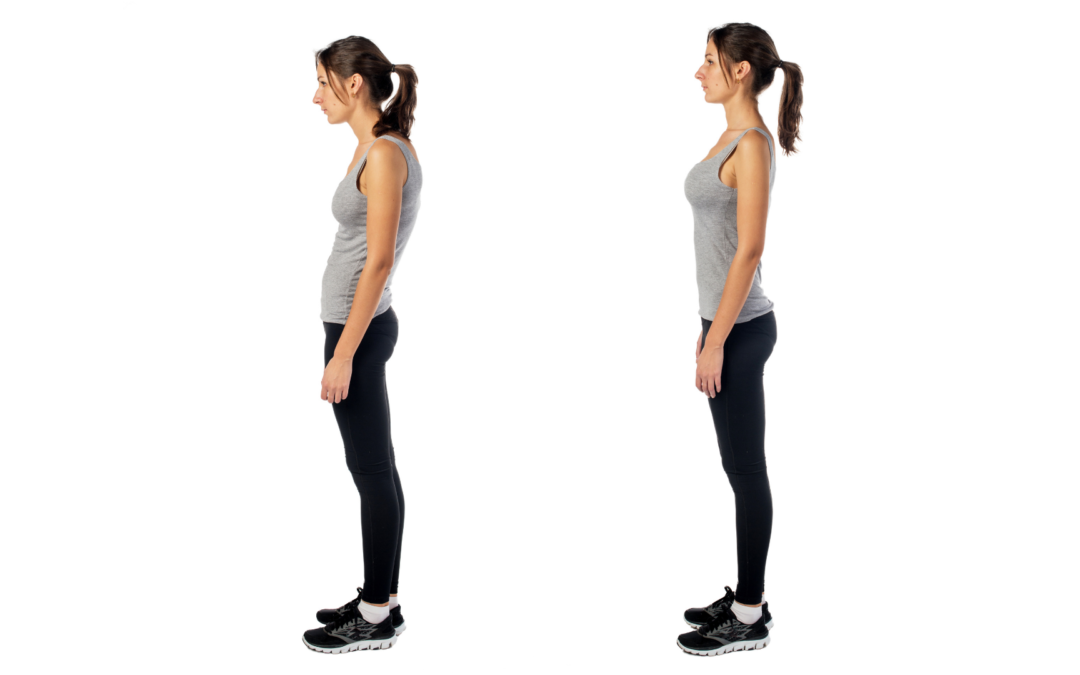Our idea of posture is interesting and the popular understanding of posture (standing and sitting up straight so that your body is aligned) is quite different from the actual definition of posture (how prepared the body is to perform a task).
The reason why this is important is because what we normally judge as “good” posture is an outcome of good muscle tone, flexibility and control rather than the being the cause of back and neck problems that are so common with business professionals.
So, if posture itself is not the most important thing in prevention of pain such as neck and back pain, what do we need to work on to avoid problems?
Postural muscle tone and strength
Most people, especially professionals who have worked at a desk, have busy lives and often have the pressures of looking after kids and family on the side are just not strong enough for what they ask their body to do in their everyday lives. Although many professionals were active in their school or university days, as professional life and family life take over, exercise, and particularly strength training start to take a back seat and slowly and gradually, postural muscle tone reduces so that your muscles no longer keep you easily up straight, putting pressure on pain sensitive structures such as ligaments, joints and discs in the neck and back pain, causing injury and pain. This can be managed and reversed by improving your postural muscle strength, improving the strength of the muscles whose main role is to keep you up straight. These muscle groups are:
-
- The stabilisers of the lower back, the multifidus muscle
- The stabilisers of the hips and pelvis, the gluteal muscle groups, which provide strength when lifting and keep you back up straight
- The shoulder blade stabilisers, which are mainly responsible for maintaining your upper body posture.
- Other supporting muscle groups, such as the quadriceps of the thighs, the calf muscles and muscles that sit on the shoulder blades, the rotator cuff muscles of the shoulders.
Strengthening these muscles is not hard but takes consistency and time. A good strengthening program of twice a week, for about 30 minutes can focus on strengthening these muscle groups on a regular basis and keep you away from your physio/chiro/osteo or doctor.
Good office set up:
Although the place to start is to strengthen your postural muscle groups, the second thing to work on is your work set-up. Ensuring a few simple things are put in place in your work set-up can make a big difference on the load on these muscle groups and ultimately how hard they must work during the day. These aspects include:
-
- Ensuring the desk is at the right height: When you sit at your desk, you should be able to sit up straight and keep your elbows easily by your sides. If the desk is too high, you can easily increase the height of your chair, but if the desk is too low, it may be too hard to obtain this position and you will have to work on a higher desk.
- You should be able to sit with knees at 90 deg, your back up against the back rest and feet supported on a surface: Once your desk height is adjusted, then next most important aspect is your hip and knee position. Your thighs should be parallel with the ground and your feet on the ground. A seat that is too big can be easily adjusted by placing a pillow behind your back, but it is too hard to compensate for one that is too small, and you will have to try another chair. If your feet do not touch the ground, a foot rest can be placed under your feet to lower body is in a great posture for your working day.
- Position the top of your monitor just below eye level and all your important items within reach: Finally, the last biggest things you can do to reduce load on your body is to make sure your monitor is at the right height (the top of the monitor just below eye level), to reduce load on both the neck and the upper back by either raising the height of the monitor or if you are using a laptop, raising the laptop and plugging in an external keyboard to be able to set up your computer in the best way for your body. Lastly, make sure all your important items, such as staplers, paper etc are within arm’s length reach to reduce load on the neck and shoulder for repetitive tasks that you will be performing all day.
These steps are not hard, just have to done consistently that will make a huge impact on the load and strain on your body everyday and in the long term, the outcome being great posture.
Do you have any questions?
Call us on (03) 9857 0644 or (07) 3505 1494 (Paddington)
Email us at admin@mdhealth.com.au
Check out our other blog posts here
Our clinical staff would be happy to have chat if you have any questions.



